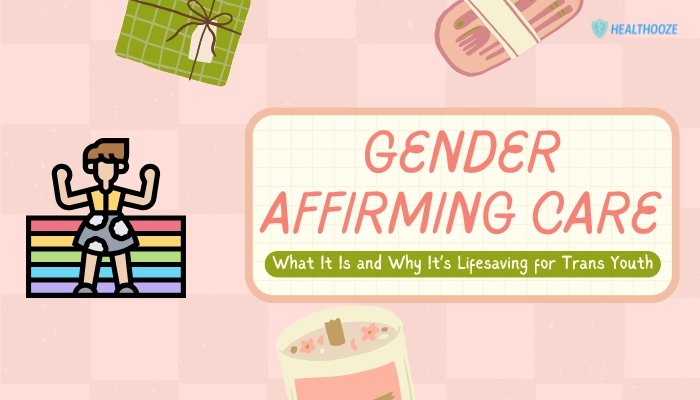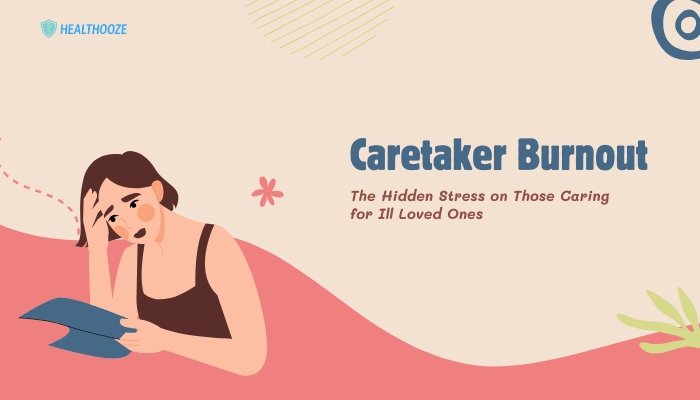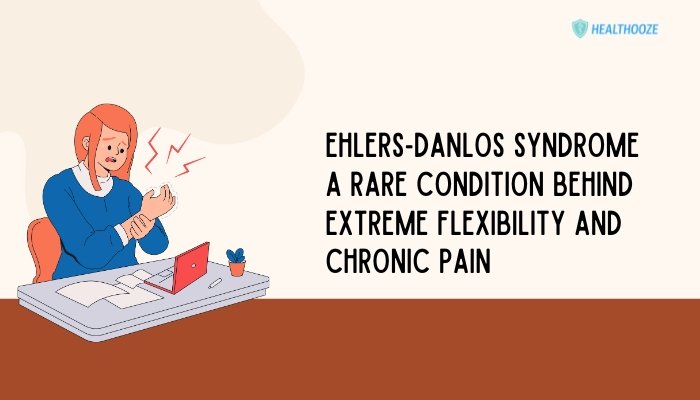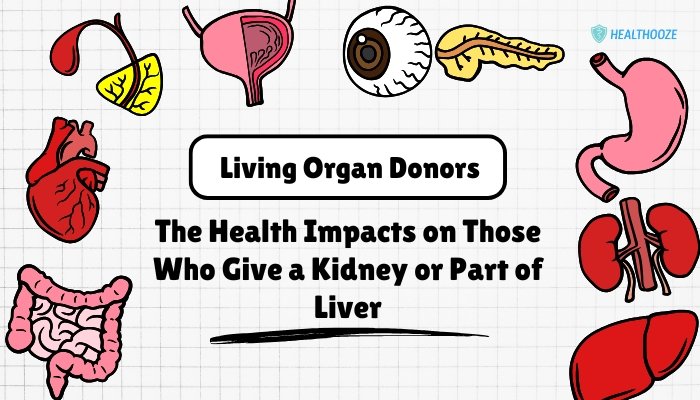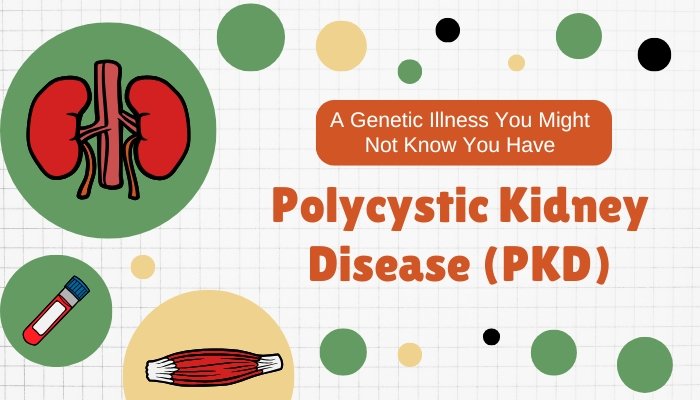Introduction
Gender-affirming care offers a supportive and structured approach to meeting the health needs of transgender youth. These services provide a range of interventions that recognize an individual’s internal sense of gender and aim to lessen distress linked to gender incongruence. Trans youth often face discrimination, bullying, or inadequate access to healthcare.
These challenges can worsen stress and lead to significant health risks, including depression and suicidal behavior. Gender-affirming care, delivered early and empathetically, can make a major difference by improving mental wellness, emotional stability, and long-term quality of life.
This article explores the components of gender-affirming care and explains why these services are life-changing for trans youth. It clarifies relevant concepts, such as puberty blockers, hormone therapy, and social transition.
It also discusses supportive strategies for families and the long-term benefits of early interventions. By understanding the purpose and benefits of gender-affirming care, parents, caregivers, and healthcare providers can better promote a nurturing environment where trans youth can thrive.
This article follows a clear structure, providing definitions, discussing key interventions, and concluding with practical tips for creating supportive spaces.
Defining Gender Identity and Trans Youth
What Is Gender Identity?
Gender identity is each person’s internal sense of being male, female, both, or neither. Most children experience alignment between their birth-assigned sex and their felt sense of gender, known as “cisgender.” However, some children have a gender identity that does not match the label assigned to them at birth. These youth may identify as transgender if they consider themselves a different gender than expected, or as nonbinary if they do not see themselves strictly as male or female.
Who Are Trans Youth?
Trans youth are individuals under 18 who identify with a gender different from their assigned sex. Some may recognize this identity at a young age, while others may realize it later. The key indicator is the persistent and consistent experience of one’s internal gender, rather than an isolated or short-lived preference. The term “transgender” can encompass various identities. In common language, trans boys were assigned female at birth but identify as male, and trans girls were assigned male at birth but identify as female. Nonbinary youth fall under the transgender umbrella in many definitions, although not every person who is nonbinary uses this label.
The Importance of Early Affirmation
When a child’s gender identity is met with understanding and respect, they tend to show increased self-esteem and a lower risk of depression or anxiety. Conversely, persistent misgendering or forcing a young person to adopt a role that contradicts their internal identity can cause emotional distress and conflict. Early gender affirmation through supportive actions—like using preferred names, pronouns, and clothing—can ease stress and set the stage for healthier outcomes in adolescence and beyond. It can also improve family dynamics, as acceptance within the home lowers the risk of mental health crises.
Elements of Gender-Affirming Care
Gender-affirming care includes social, medical, and psychological support. These components may occur at different stages depending on the youth’s age, emotional development, physical development, and personal needs. By design, gender-affirming care is flexible and guided by clinical standards that prioritize a young person’s well-being.
Social Transition
Social transition involves non-medical steps to align everyday life with one’s gender identity. Examples include:
- Adopting a new name or pronouns
- Choosing clothing, hairstyles, or accessories that match one’s identity
- Using gender-appropriate restrooms or requesting inclusive facilities at school
A social transition is often the first step for trans youth, especially younger children who are not ready for medical interventions. Families and schools that acknowledge the youth’s chosen name and pronouns can reinforce positive mental health. Social transition does not necessarily lead to irreversible changes; it simply provides a living environment that better matches the youth’s feelings. If the child’s identity evolves, social expressions can be adjusted without permanent implications.
Psychological and Behavioral Support
- Counseling and Therapy: Trans youth commonly benefit from therapy with clinicians experienced in gender identity. Counseling can help them manage distress related to social challenges, such as harassment or isolation. Mental health professionals also support family members in understanding and accepting the child’s identity.
- Parental and Family Education: Parents often benefit from education about gender development and strategies for creating an affirming home. Access to parent support groups can ease fears and provide insights from others who have faced similar situations.
- Group Support for Peers: Schools or community centers may host support groups for trans youth. Sharing experiences in a safe space fosters community and emotional resilience.
Puberty Blockers
Puberty blockers, also called gonadotropin-releasing hormone (GnRH) analogues, are reversible medications that pause puberty-related changes. Providers may offer these blockers to trans youth typically during early puberty stages if the youth experiences significant distress about their expected pubertal development. Puberty blockers:
- Delay development of secondary sex characteristics, such as facial hair or breast growth
- Provide time for the youth to explore their identity without feeling rushed by bodily changes
- Reduce the need for future invasive medical procedures, such as surgeries to remove unwanted physical traits
Puberty blockers are generally considered safe when administered under medical supervision. Their effects are not permanent; if the medication is stopped, natural puberty resumes. This intervention can significantly reduce emotional stress for trans youth who feel uncomfortable watching their bodies develop in ways that do not match their identity.
Hormone Therapy
For adolescents reaching a later stage of development, hormone therapy may be considered. This intervention can include:
- Estrogen Therapy: For trans girls or some nonbinary youth assigned male at birth. It promotes breast development, softens skin, and alters body fat distribution.
- Testosterone Therapy: For trans boys or some nonbinary youth assigned female at birth. It deepens the voice, increases muscle mass, and encourages facial hair growth.
Hormone therapy is partially reversible, meaning that some changes may be reversed if the therapy is stopped early, but others (such as voice deepening) may become permanent. It is critical to conduct thorough evaluations, including mental health assessments and discussion of risks, before beginning hormones. In addition, adolescents and families must be fully informed about potential impacts on fertility, as some hormone-induced changes may hinder biological reproduction. If fertility is a concern, options like egg or sperm preservation should be discussed before treatment.
Surgical Options (Later Stages)
Most medical guidelines do not recommend gender-affirming surgeries for minors, except in rare cases and only after comprehensive assessments. These procedures can include chest reconstruction for trans boys or breast augmentation for trans girls, but many surgeons prefer waiting until an individual reaches 18 or has achieved specific developmental milestones. Genital surgeries for those under 18 are generally less common, given the permanency and complexity involved. Exceptions are made case by case in consultation with experienced mental health professionals, endocrinologists, and surgeons. For many trans youth, the focus remains on social transition and potential hormonal treatment until adulthood, allowing enough time for self-exploration and decision-making.
Why Gender-Affirming Care Is Lifesaving
Reducing Mental Health Risks
Trans youth often deal with elevated rates of depression, anxiety, and suicidal thoughts. These struggles typically stem from discrimination, bullying, family rejection, and the stress of hiding one’s identity. By offering affirming care and respectful treatment, the emotional burdens can lessen. Data from multiple studies show that supportive interventions and acceptance from parents or guardians drastically reduce suicide attempts. Affirmed youth are more likely to stay engaged in school, maintain social relationships, and develop healthy coping mechanisms.
Mitigating the Harm of Unsupportive Environments
In settings without inclusive policies, trans youth can face repeated discrimination. Examples include:
- Denial of restroom access that aligns with their gender
- Being forced to wear uniforms that conflict with their identity
- Harassment from teachers or peers, sometimes with no administrative intervention
These negative encounters can compound daily stress and lead to missed classes, poorer academic performance, or dropping out. Gender-affirming care recognizes that a young person’s well-being depends on social acceptance and personal safety. Healthcare professionals and family members can serve as advocates for fair treatment in schools and community programs, improving the child’s chance at a stable life path.
Delaying or Withholding Care Increases Risks
Lack of gender-affirming care can force trans youth to experience irreversible bodily changes that intensify dysphoria. A trans boy undergoing female puberty may become extremely distressed by breast development or menstrual cycles, leading to self-harm or suicidal ideation. Early interventions, such as puberty blockers, can prevent the accumulation of traumatic experiences. Not every trans youth will choose blockers or hormone therapy, but having the option to consider these interventions is essential for those who want them. Access to reputable providers and mental health resources can be the difference between emotional stability and crisis.
Encouraging Healthy Identity Formation
A supportive environment allows a trans youth to focus on typical developmental tasks: building friendships, exploring personal interests, and planning for the future. Instead of channeling energy into hiding aspects of themselves, they can grow socially and academically. Feeling accepted fosters confidence and self-esteem, which translate into better long-term outcomes, such as stable employment, higher education prospects, and healthy relationships. Gender-affirming care can free them from the burden of constant self-doubt and fear of judgment.
Common Myths About Gender-Affirming Care
Myth 1: It Confuses Children About Their Gender
Some people believe that acknowledging a child’s preferred name or pronouns might create confusion or encourage children to become trans. In reality, the best available evidence shows that children express their identities from an early age, regardless of external pressure or encouragement. Affirmation helps children who already feel different feel understood. It does not shape someone’s identity; it provides support for what already exists.
Myth 2: Children Are Too Young to Know Their Gender
A frequently heard claim is that young children cannot understand gender. However, many children express consistent gender behavior by age three or four. Trans youth who persistently identify with a different gender typically do not change their minds. While children’s interests can shift, persistent and insistent identification with another gender strongly indicates a true identity, not a passing phase.
Myth 3: Hormone Therapy Always Causes Sterility
Hormone therapy can affect fertility, but its impact is not uniform. Some changes, such as suppressed sperm or egg production, can be temporary if hormone use is brief. In other cases, fertility might be more profoundly affected, especially with long-term treatments. Providers typically discuss these issues with patients and their families, offering options for fertility preservation (e.g., sperm banking or egg freezing). Not all trans teens choose hormone therapy, and not all require it to alleviate distress.
Myth 4: Gender-Affirming Care Is Cosmetic or Optional
Gender-affirming care extends beyond aesthetics. For many trans youth, puberty blockers or hormone therapy significantly reduce stress, suicidal thoughts, and self-harm behaviors. This care involves mental health and well-being as much as it does physical transformation. Denying access to evidence-based interventions can have serious consequences for a child’s emotional state and safety. It is not a trivial choice but a medically recognized path that addresses real distress.
Role of Families in Gender-Affirming Care
Parental Support and Acceptance
Parents play a vital role in the health and happiness of trans youth. Acceptance can include:
- Using the child’s chosen name and pronouns
- Allowing the child to explore hairstyles or clothing that fit their identity
- Listening to the child’s concerns without judgment
Children who have supportive parents generally have fewer mental health issues. They are more resilient when facing prejudice outside the home. Parental involvement also improves cooperation with healthcare teams, leading to better outcomes.
Family Therapy
Family therapy sessions allow parents and guardians to learn about gender identity. Therapists can address:
- Emotional responses from parents who might struggle with fear, grief, or guilt
- Strategies to help siblings understand changes in the home
- Ways to navigate conflicts with extended family members who may not be accepting
By encouraging open communication and education, therapists reduce family tension. This approach teaches each household member how to respect the youth’s identity and adapt to any adjustments that occur during transition.
Setting Boundaries with Unsupportive Relatives
Not everyone will understand or accept a trans child’s identity. Parents sometimes need to set rules to protect their child’s well-being, especially around extended family members who are openly hostile. A few steps may include:
- Limiting contact with individuals who misgender or ridicule the child
- Using direct communication about the child’s needs and non-negotiable boundaries
- Providing resources that explain gender identity to relatives who are unsure but willing to learn
Balancing family relationships is complex. However, the child’s safety and emotional health must remain a top priority. Encouraging or requiring relatives to address the youth appropriately lays the groundwork for respectful interactions.
Role of Schools and Community Organizations
School Policies
Schools should adopt clear policies that protect trans students. Important measures include:
- Allowing students to use preferred names on roll calls, report cards, and IDs
- Granting access to restrooms or locker rooms that align with a student’s gender identity
- Training staff to address bullying or harassment promptly
- Adding anti-discrimination statements to dress codes and school bylaws
Trans youth spend many hours each week in school environments. Inclusive policies help them focus on learning instead of coping with fear or discomfort. School staff who receive training in gender diversity can create an atmosphere that respects each student’s identity.
Peer Support Groups and Clubs
Clubs like Gender-Sexuality Alliances (GSAs) provide a gathering space for LGBTQ+ youth. These groups offer:
- Peer connection and friendship
- Educational resources for students, teachers, and parents
- A forum for discussing social issues like bullying or microaggressions
Through these clubs, trans youth discover they are not alone and can find role models who have faced similar experiences. Active clubs also encourage open dialogue within the broader student body, reducing misinformation and promoting empathy.
Community Resources
Outside of school, community centers and nonprofit organizations may organize:
- Counseling sessions for trans youth and their families
- Workshops on legal name and gender marker changes
- Health fairs offering information on puberty blockers or hormone therapy
- Support hotlines or online forums run by trained volunteers
These resources often fill gaps in areas where specialized mental health or medical services are scarce. Virtual communities, including moderated social media groups, can connect trans youth who might feel isolated in rural places. Careful moderation by professionals or trained peers helps maintain safety and constructive dialogue.
Ethical and Legal Considerations
Informed Consent
In gender-affirming care, informed consent is crucial. Youth, alongside their guardians, must understand the risks, benefits, and possible outcomes of any intervention. For puberty blockers or hormones, medical professionals explain:
- Expected physical changes
- Potential side effects
- The possibility of impacting future fertility
- The psychological impacts of alignment between physical traits and gender identity
The goal is to ensure that minors and their families make these decisions based on accurate, clear information. Providers often follow established guidelines from professional bodies that emphasize a careful, step-by-step process.
Confidentiality
Respect for privacy is essential. Healthcare providers must maintain strict confidentiality about a youth’s gender identity, treatments, and personal details. Breaches in confidentiality can lead to bullying or family disputes, placing the child at risk. In many jurisdictions, minors have rights to confidential healthcare for sensitive matters, depending on local laws. Parents should also be aware of confidentiality boundaries to avoid unintended disclosures.
Anti-Discrimination Laws
Some regions have laws that explicitly protect transgender individuals in healthcare, education, and employment settings. These statutes may mandate:
- Equal access to medical services, including gender-affirming care
- Protection against harassment at school
- Legal recognition of chosen names and pronouns on documents
Where such laws are absent, trans youth may face obstacles in receiving needed interventions. Advocacy efforts and legal challenges often focus on expanding anti-discrimination protections to ensure consistent care for trans youth across regions.
Long-Term Outcomes of Early Support
Improved Mental Health Trajectories
Longitudinal studies indicate that early support reduces the incidence of severe depression and self-harm among trans individuals. Children allowed to socially transition at younger ages often display mental health profiles similar to their cisgender peers. Consistent guidance from mental health professionals and peer networks helps them develop coping tools that carry into adulthood.
Better Education and Career Prospects
Youth who receive affirmation tend to remain engaged in school. They can concentrate on learning instead of constantly managing anxiety or fear. Higher academic achievement can lead to better career paths and financial stability. Individuals who transition early may avoid years of distress, allowing them to explore personal interests and job opportunities without the distraction of untreated gender dysphoria.
Healthier Relationships
A sense of self-confidence often emerges from living authentically. When trans youth feel accepted by family and peers, they learn to form healthier bonds with friends and future partners. Communication skills improve when the teen no longer feels pressured to hide core aspects of who they are. As an adult, they are more likely to pursue stable relationships based on mutual respect and understanding.
Reduced Healthcare Costs
When conditions like anxiety, depression, or substance use remain untreated, they can lead to more complex healthcare needs later in life. Early gender-affirming care may reduce these longer-term issues, resulting in fewer hospitalizations or crises. Moreover, delaying medical transitions can create the need for more invasive procedures once adult puberty is complete, which can be more costly and carry higher risks. By addressing dysphoria early, both the patient and the broader healthcare system may benefit in the long run.
Addressing Concerns About Gender-Affirming Care
Balancing Caution and Urgency
Some guardians hesitate, fearing that children might later change their minds. However, guidelines promote a cautious yet timely approach. Social transition is reversible, while puberty blockers offer a pause rather than a permanent change. Medical professionals use thorough assessments to ensure that interventions align with the young person’s specific needs. Balancing careful evaluation with recognition of immediate distress helps each child feel validated and safe.
Access to Qualified Providers
One challenge is finding experts in transgender health, particularly in rural areas. Not all pediatricians or mental health clinicians have specialized training. Telehealth can reduce geographic barriers by connecting youth with specialists who understand current best practices. As public awareness grows, more clinicians are seeking certifications or additional education in gender-affirming care. Families can ask primary care providers for referrals or consult local LGBTQ+ organizations for recommendations.
Insurance and Financial Barriers
Coverage for puberty blockers or hormone treatments varies across insurance plans. Parents may face high out-of-pocket costs or requirements for multiple authorization steps. However, many advocacy groups are working to expand insurance coverage for medically necessary care. Documenting the mental health benefits and recognized guidelines for treating gender dysphoria can improve the odds of coverage approval. Families who cannot afford specialized care may be eligible for grants or discounted services through nonprofits.
Encouraging Broader Community Acceptance
Despite policy advances, many trans youth still experience stigma in their schools and neighborhoods. Families might be reluctant to discuss the child’s identity publicly due to fear of harassment. Advocacy efforts at the local level can help shift attitudes. Active community programs, inclusive policies in schools, and open dialogue in religious or civic spaces promote broader acceptance. This process takes time, but each step reduces isolation and improves safety.
Practical Tips for Supporting Trans Youth
- Use Correct Names and Pronouns
- Ask politely how the youth wants to be addressed. Consistent use of the chosen name and pronouns reflects respect and support.
- Educate Yourself
- Seek reputable sources about gender identity, including medical guidelines. Contact local LGBTQ+ organizations or read research findings from professional bodies.
- Create Affirming Spaces
- Ensure there is a private area for the young person to change clothes at home and school. Display signs or symbols that indicate support, such as inclusive posters or books.
- Stay Attentive to Mental Health
- Pay attention to signs of distress like changes in mood, appetite, or school performance. Collaborate with mental health professionals when needed.
- Involve the Child in Decisions
- Include the youth in discussions about puberty blockers, counseling, or any other interventions. Hearing their viewpoint fosters trust and ensures decisions align with their comfort level.
- Seek Qualified Clinicians
- Ask pediatricians for referrals to endocrinologists or therapists with experience in trans health. Verify that they follow established guidelines on gender-affirming care.
- Address Bullying Immediately
- Report harassment to school officials. Request policy changes if existing measures are insufficient. Encourage staff to intervene early in bullying incidents.
- Practice Ongoing Communication
- Family discussions about gender identity should be consistent. A single conversation is not enough. Ongoing dialogue allows the young person’s needs or feelings to evolve naturally.
- Explore Community Resources
- Look for local support groups, hotlines, or online forums. Peer support helps the youth realize they are not alone in their experiences.
- Focus on Well-Being
- Understand that gender-affirming care is about holistic health. Whether it is social transition, therapy, or medical steps, the focus is to alleviate distress and nurture positive self-image.
Conclusion
Gender-affirming care stands as a crucial, evidence-based framework for supporting trans youth. It encompasses social, psychological, and, when appropriate, medical interventions that help young people align their external presentation with their internal sense of gender. This care can alleviate mental health stress, improve self-esteem, and strengthen academic and social outcomes. Early acceptance, combined with a flexible approach to intervention, can save lives by reducing the risks of untreated gender dysphoria, depression, and self-harm.
Families, educators, healthcare providers, and communities all share responsibility in nurturing trans youth. When young people feel validated and safe, they are more likely to develop the resilience needed for a healthy, fulfilling adulthood. Denying or delaying care increases the chance of long-term distress and crisis, while timely affirming steps open pathways toward stable well-being. With informed policies, well-trained medical professionals, and supportive relationships, trans youth can achieve their full potential. Gender-affirming care is a cornerstone of this journey, providing hope, affirmation, and the chance for every child to flourish.
References
- Coleman E, Bockting W, Botzer M, et al. Standards of care for the health of transsexual, transgender, and gender-nonconforming people. Int J Transgend. 2012;13(4):165–232.
- de Vries AL, McGuire JK, Steensma TD, et al. Young adult psychological outcome after puberty suppression and gender reassignment. Pediatrics. 2014;134(4):696–704.
- Olson KR, Durwood L, DeMeules M, et al. Mental health of transgender children who are supported in their identities. Pediatrics. 2016;137(3):e20153223.
- Turban JL, King D, Carswell JM, et al. Pubertal suppression for transgender youth and risk of suicidal ideation. Pediatrics. 2020;145(2):e20191725.
- Rider GN, McMorris BJ, Gower AL, et al. Health and care utilization of transgender and gender nonconforming youth: A population-based study. Pediatrics. 2018;141(3):e20171683.
- American Psychological Association. Guidelines for psychological practice with transgender and gender nonconforming people. Am Psychol. 2015;70(9):832–864.
- Tishelman AC, Shumer DE, Nahata L, et al. Psychological evaluation and medical treatment of transgender youth in an interdisciplinary “Gender Management Service” (GeMS) in a major pediatric center. J Homosex. 2015;62(10):1303–1328.
- Johns MM, Lowry R, Andrzejewski J, et al. Transgender identity and experiences of violence victimization, substance use, suicide risk, and sexual risk behaviors among high school students. MMWR Morb Mortal Wkly Rep. 2019;68(3):67–71.
- Durwood L, McLaughlin KA, Olson KR. Mental health and self-worth in socially transitioned transgender youth. J Am Acad Child Adolesc Psychiatry. 2017;56(2):116–123.
- Green AE, Price-Feeney M, Dorison SH, et al. Association of gender-affirming hormone therapy with depression, thoughts of suicide, and attempted suicide among transgender and nonbinary youth. J Adolesc Health. 2022;70(4):643–649.
- Rafferty J, Committee on Psychosocial Aspects of Child and Family Health. Ensuring comprehensive care and support for transgender and gender-diverse children and adolescents. Pediatrics. 2018;142(4):e20182162.
Olson-Kennedy J, Cohen-Kettenis PT, Kreukels BP, et al. Research priorities for gender nonconforming/transgender youth: gender identity development and biopsychosocial outcomes. Curr Opin Pediatr. 2016;28(4):505–508.

